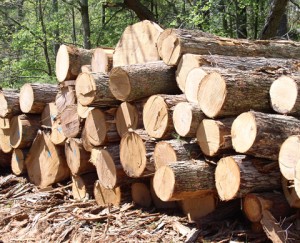Ghana losing millions of dollars in timber industry – Civic Response
 Ghana made a loss of $16 million in ten years in the timber industry, for not reviewing and collecting “stampage fees” – the tax payable to government per volume of lumber.
Ghana made a loss of $16 million in ten years in the timber industry, for not reviewing and collecting “stampage fees” – the tax payable to government per volume of lumber.
Obed Owusu-Addai, the Programme Officer of Civic Response, a natural resources and environment NGO which is the secretariat of the civil society coalition Forest Watch Ghana, told journalists.
He indicated that according to the laws, the stampage fees need to be reviewed quarterly but have not been reviewed for 10 years.
Mr. Owusu-Addai was speaking to journalists at a forum organised by the Editors Forum, Ghana and Civic Response, Wednesday November 4, 2015 in Accra.
Additionally during that period, he said, there was not maximum collection of the stampage fees due government.
“They take the timber to the international market, they sell it, but they don’t pay government so you go into government’s books and there are several companies who owe the state stampage fees, but we have not collected them”, Mr Owusu-Addai said.
The figure could be higher as the analysis does not even consider some indicators such as interest rates.
Mr. Owusu-Addai added that within the period, timber rights fees which consist of a number of charges, including what hitherto was known as concession fees, payable to government annually before lumber harvesting, were also not paid.
All this revenue loss is in addition to losses from illegal chainsaw activities, which is estimated by the Forestry Research Institute of Ghana (FORIG) of the Council for Scientific and Industrial Research (CSIR) at $200 million annually, from the intrinsic value of the timber and the evaded taxes.
Put together and combined with the financial and environmental cost of losses in forest cover, the figure is a colossal amount that is difficult to arrive at.
“It cannot be quantified. We need to go back and do a forensic audit to be able to arrive at the figures. The ones that we have figures for, if you put them together it is over $200 million annually,” Owusu-Addai said.
Ghana had a forest cover of about 8.2 million hectares at the turn of the 20th century but an annual loss rate of 2.2 per cent – about 135,000 hectares per year – has reduced the forest cover to 1.6 million hectares as at year 2000.
Compounding the problem, some of the areas still regarded as forest reserves are demarcated reserves only on the maps: on the ground, the vegetation has actually been lost.
Mr Owusu-Addai said he believes that if properly examined, Ghana’s actual forest cover could be less than 500,000 hectares.
By Emmanuel Odonkor
